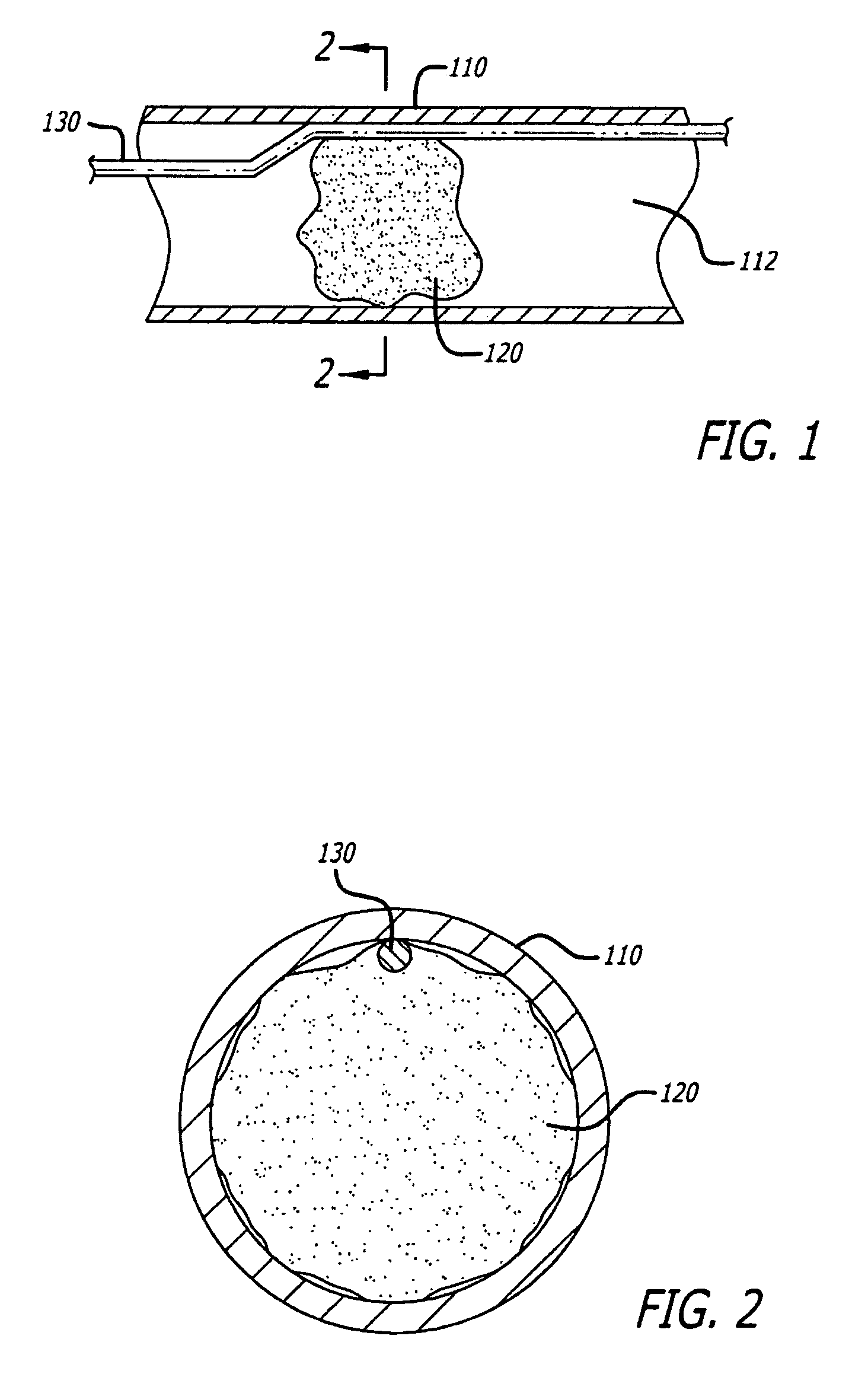Embolus removal systems with baskets
a basket and embolic technology, applied in the field of minimally invasive and catheter delivery embolic capture devices, can solve the problems of significant focal stenosis, negative effects of ia and iv thrombolytics, and hyperglycemia, and achieve the effect of facilitating and enabling treatment of ischemic or hemorrhagic strok
- Summary
- Abstract
- Description
- Claims
- Application Information
AI Technical Summary
Benefits of technology
Problems solved by technology
Method used
Image
Examples
example 1
In Vitro Tracking Evaluation Test
[0084]A study was performed to evaluate in-vitro tracking of embodiments of delivery system. The testing equipment included: a FlowTek A201 with stroke model, a 5F CORDIS® ENVOY™ MPD guide catheter, a 135 cm×0.027″ inner diameter CORDIS® MASS TRANSIT™ microcatheter, and a 0.010 diameter×200 cm length TRANSEND® guidewire. The study used the following numbered scoring system: (1) pass with no friction at all; (2) pass with acceptable friction; (3) pass with some friction; (4) pass with difficulty; (5) can't pass.
[0085]
Design CurveCurve Curve Curve A1 / M2 / #1234PCOMM1M31⅔⅔⅔⅔⅔⅔2233333323N / AN / AN / AN / AN / AN / AN / A4222222251½½½½½½
[0086]The following notes were taken from the study regarding guidewire tracking. Design 1 passed fine until the PCOM segment with a score of 4. Design 2 experienced some friction requiring 300 cm of exchange wire with a score of ¾. Design 4 scored a 5 at curve 4. Design 5 scored a 4 generally. Designs 3 and 4 had a 0.0155″ inner diamete...
example 2
Clotting Characteristics of Swine Blood for Testing Purposes
[0102]A study was performed to evaluate swine blood for clotting characteristics under certain handling conditions. The materials used in the test included: (1) 1 liter of pig blood (no anti-coagulant), (2) Pyrex® glassware, (3) Clorox® bleach, (4) syringes, and (5) saline consisting of a multi-purpose no rub isotonic solution, (In accordance with one embodiment, the testing procedure was performed as follows: (1) pour pig blood into glassware, (2) allow pig blood to sit for 90 minutes, (3) wash the pig blood with saline, (4) allow to sit for 60 minutes, (5) remove “white” clot with cutting tools, (6) wash thoroughly with saline, and (7) measure clot dimensions. The dimensions of the clot removed from the pig blood had a length of 50 mm and a diameter ranging from 7 to 10 mm. Other disclosure can be found in U.S. Provisional No. 61 / 057,613, which is expressly incorporated herein by reference.
[0103]As excerpted from U.S. app...
PUM
 Login to View More
Login to View More Abstract
Description
Claims
Application Information
 Login to View More
Login to View More - R&D
- Intellectual Property
- Life Sciences
- Materials
- Tech Scout
- Unparalleled Data Quality
- Higher Quality Content
- 60% Fewer Hallucinations
Browse by: Latest US Patents, China's latest patents, Technical Efficacy Thesaurus, Application Domain, Technology Topic, Popular Technical Reports.
© 2025 PatSnap. All rights reserved.Legal|Privacy policy|Modern Slavery Act Transparency Statement|Sitemap|About US| Contact US: help@patsnap.com



